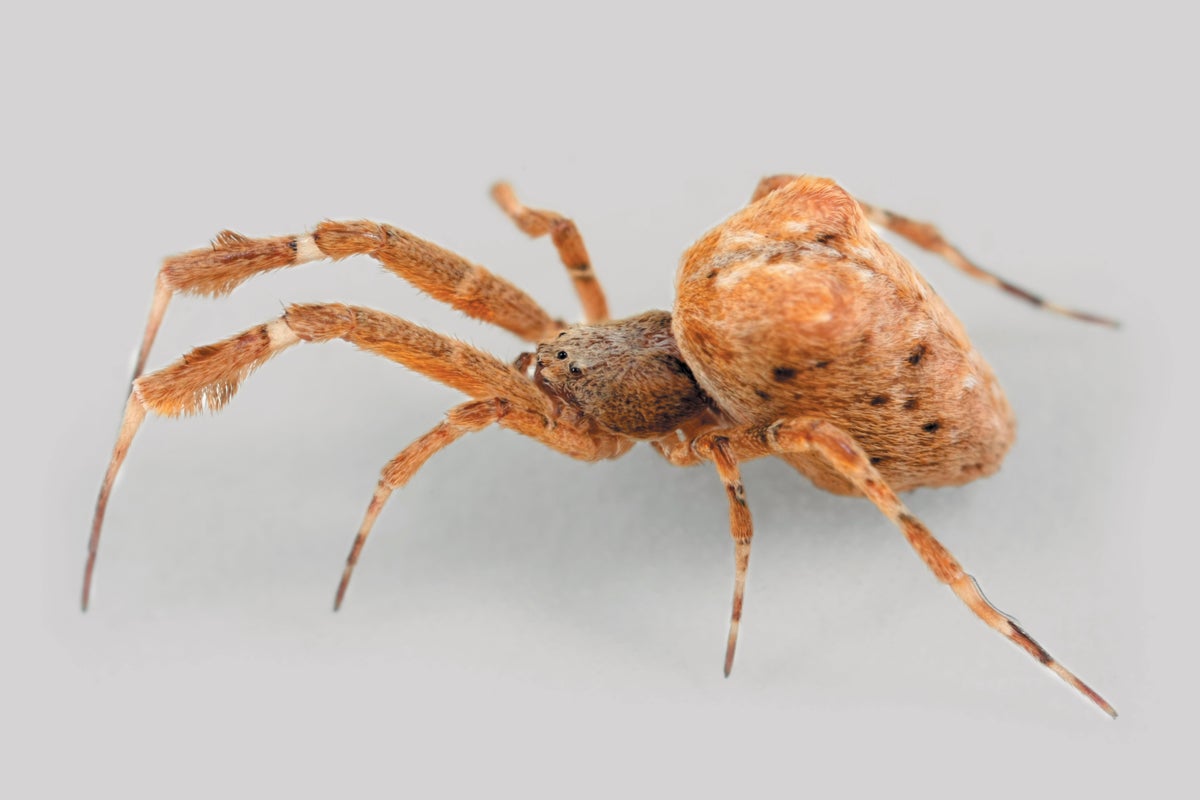These Spiders Puke Up Toxic Digestive Fluid to Marinate Their Prey Alive
Without a venomous bite, some spiders use a disturbing second option to prepare their food
Join Our Community of Science Lovers!
You don’t always need a book or movie for a good horror story. Sometimes, if you dare look closely enough, you can find one in your own backyard. Researchers have just confirmed the inner workings of a brutal food-prep technique some spiders use, wrapping their web-snagged prey tightly in silk strands, then puking up toxic digestive fluids to soak the entire package to marinate their meal alive.
Spiders from the Uloboridae family, usually just a few millimeters long, have puzzled scientists because they seemed to lack venom—a substance that is widespread among spiders and “really linked to their evolutionary success,” says Alex Winsor, a neuroethologist at the University of Massachusetts Amherst who wasn’t involved in the new research.
And there was another mystery. Uloboridae spiders were already known to wrap their prey in hundreds of meters of silk and then regurgitate on them, but researchers hadn’t fully pinned down the function of their dramatic vomit. Intrigued, a study team took a closer look at how these predators prepare a snack for themselves. The findings were published in .
If you’re enjoying this article, consider supporting our award-winning journalism by subscribing. By purchasing a subscription you are helping to ensure the future of impactful stories about the discoveries and ideas shaping our world today.
By analyzing one species called Uloborus plumipes, the researchers confirmed that these spiders lack venom glands and thus are unable to administer venom in the classic spider way: injecting it into their prey with a fanged bite. But the scientists did find genes actively producing toxinlike proteins in the spiders’ digestive system—particularly in the midgut area—and these potential toxins “appear to be very strong,” says study co-author Giulia Zancolli, an evolutionary biologist at the University of Lausanne in Switzerland.
Injecting these digestive fluids into fruit flies in the laboratory proved their high toxicity: just 230 nanograms—billionths of a gram—killed more than half the flies within an hour. The researchers theorize that these spiders do indeed marinate their prey to death this way. Strangely, some spiders from other families that kill with the usual venomous bites are also known to have toxins in their digestive fluids, Zancolli says. This fact raises what she calls a “fascinating question”: What role do these substances play for species outside the Uloboridae family?
Gennaro Tomma is a freelance journalist who covers science, with a focus on the natural world, biodiversity, conservation, climate change, environmental and science-related policies, and more. His work has appeared in the New York Times, Science, National Geographic, New Scientist and other outlets. Find more on his website: https://gennarotomma.it
Source: www.scientificamerican.com
